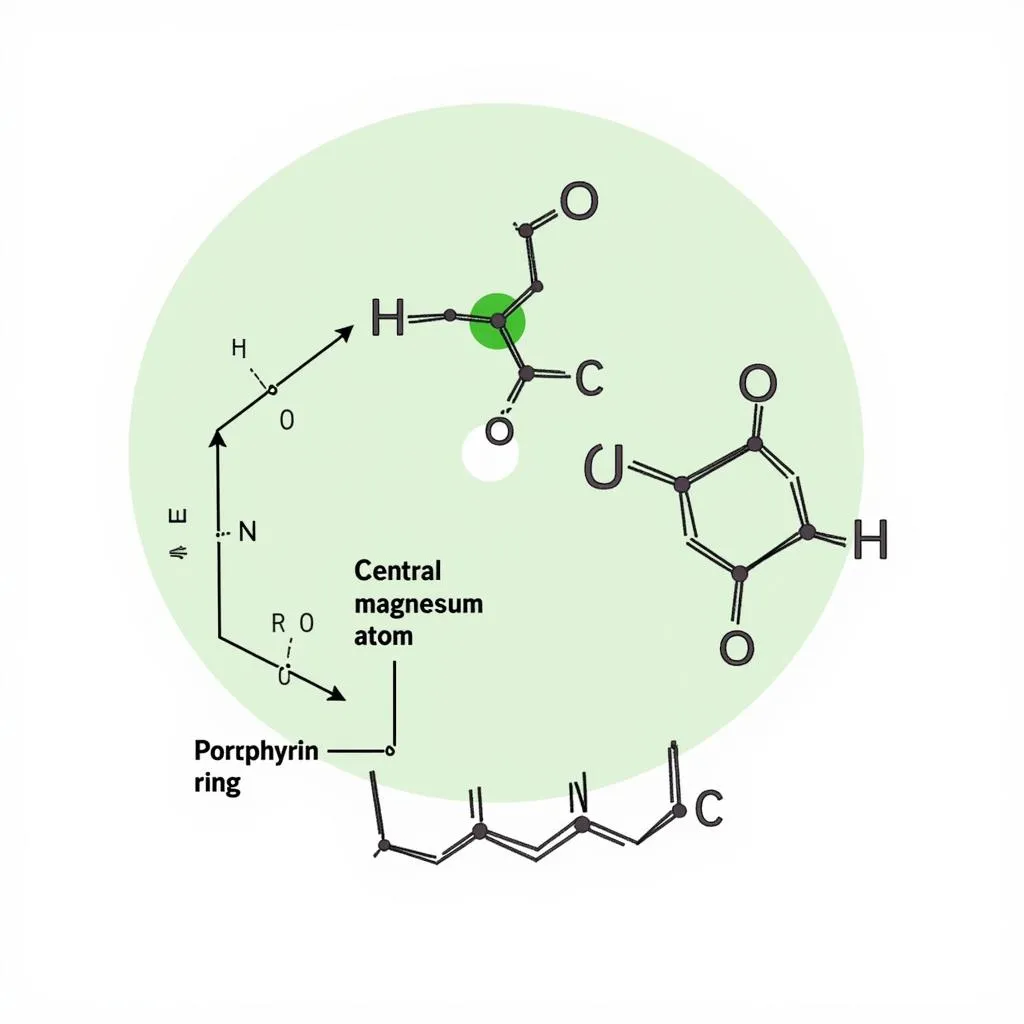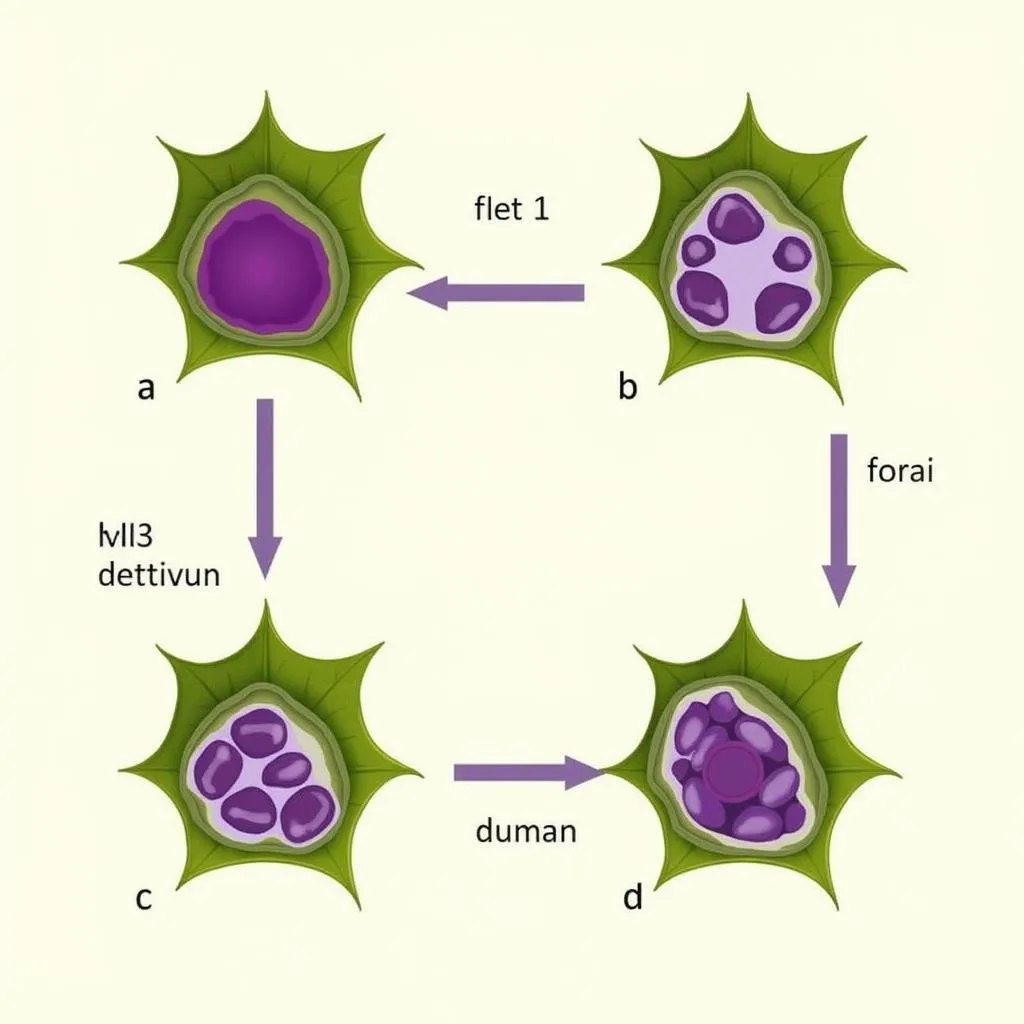The vibrant transformation of leaves from lush green to fiery reds, oranges, and yellows is a sure sign of autumn. But have you ever wondered, is leaves changing color a chemical change or simply a physical one?
Unmasking the Science Behind Fall Colors
To understand the science behind this colorful phenomenon, we need to delve into the fascinating world of plant pigments and chemical reactions.
Chlorophyll: The Summer Superstar
During spring and summer, leaves are bustling with chlorophyll, the pigment responsible for their green color. Chlorophyll plays a crucial role in photosynthesis, the process by which plants convert sunlight into energy.
 Chlorophyll Molecule Structure
Chlorophyll Molecule Structure
Carotenoids: The Hidden Hues
While chlorophyll takes center stage in summer, other pigments called carotenoids are always present in the leaves, albeit masked by the dominant green. Carotenoids are responsible for the yellow and orange hues we associate with fall.
Anthocyanins: The Autumn Artists
As summer fades and days shorten, the production of chlorophyll slows down, eventually stopping altogether. This allows the carotenoids to shine through, revealing the yellows and oranges. In some trees, another group of pigments called anthocyanins emerges, painting the leaves in vibrant reds and purples.
The Chemical Transformation
The decrease in chlorophyll production triggers a cascade of chemical reactions within the leaf. This includes the breakdown of chlorophyll and the synthesis of anthocyanins.
 Anthocyanin Pigment Formation
Anthocyanin Pigment Formation
These chemical changes alter the composition of the leaves, making them a prime example of a chemical, rather than a physical, change.
Why Do Leaves Change Color?
The changing colors of leaves are not just a visual treat but serve an essential purpose in the life cycle of trees.
- Conserving Resources: As sunlight dwindles, trees prepare for winter by breaking down chlorophyll and reabsorbing its nutrients.
- Protecting Leaves: Anthocyanins act as antioxidants, protecting the leaves from damage caused by excess sunlight and cold temperatures.
Factors Influencing Fall Foliage
The intensity and brilliance of fall colors are influenced by several factors, including:
- Temperature: Cool, sunny days and crisp nights promote the most vibrant colors.
- Moisture: Adequate rainfall throughout the growing season contributes to healthier trees and more vibrant foliage.
- Sunlight: Ample sunlight, especially during the fall, enhances anthocyanin production.
The Beauty of Chemical Change
So, the next time you marvel at the breathtaking display of fall foliage, remember that you’re witnessing a remarkable chemical transformation. The vibrant hues are a testament to the intricate processes occurring within each leaf, a reminder that even in nature, change is often accompanied by extraordinary beauty.

